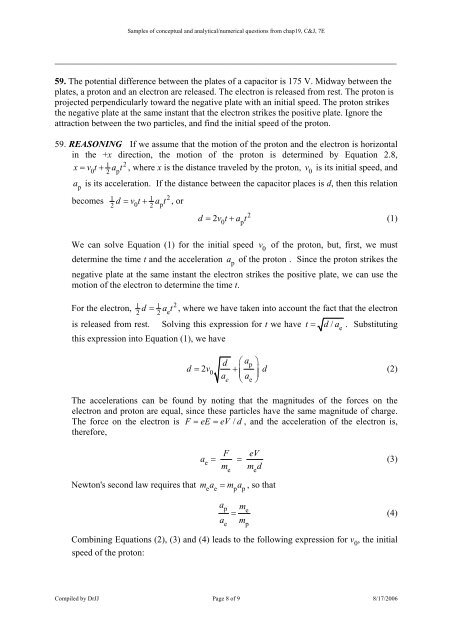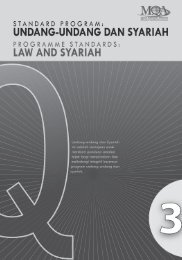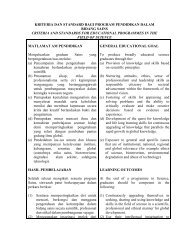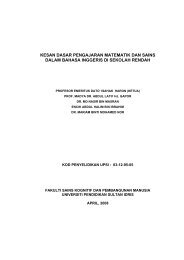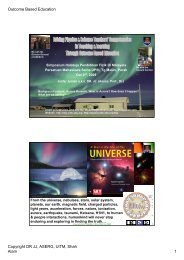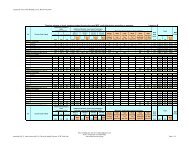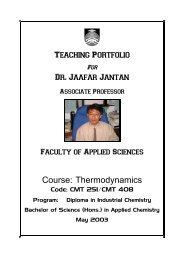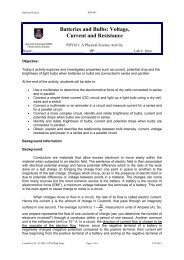Basic Physics II Evidences - DrJJ - UiTM
Basic Physics II Evidences - DrJJ - UiTM
Basic Physics II Evidences - DrJJ - UiTM
Create successful ePaper yourself
Turn your PDF publications into a flip-book with our unique Google optimized e-Paper software.
Samples of conceptual and analytical/numerical questions from chap19, C&J, 7E___________________________________________________________________________59. The potential difference between the plates of a capacitor is 175 V. Midway between theplates, a proton and an electron are released. The electron is released from rest. The proton isprojected perpendicularly toward the negative plate with an initial speed. The proton strikesthe negative plate at the same instant that the electron strikes the positive plate. Ignore theattraction between the two particles, and find the initial speed of the proton.59. REASONING If we assume that the motion of the proton and the electron is horizontalin the +x direction, the motion of the proton is determined by Equation 2.8,x 1 2= vt 0+ at p, where x is the distance traveled by the proton, v0is its initial speed, andp2a is its acceleration. If the distance between the capacitor places is d, then this relationbecomes1 12 0 2 pd = v t + a t , or20 p2d = 2v t+ a t(1)We can solve Equation (1) for the initial speed v 0of the proton, but, first, we mustdetermine the time t and the acceleration apof the proton . Since the proton strikes thenegative plate at the same instant the electron strikes the positive plate, we can use themotion of the electron to determine the time t.For the electron,1 12d 2 e2= a t , where we have taken into account the fact that the electronis released from rest. Solving this expression for t we have t = d/ae. Substitutingthis expression into Equation (1), we haved ⎛ap⎞d = 2 v0+⎜ da ⎜ea ⎟⎝ e ⎠(2)The accelerations can be found by noting that the magnitudes of the forces on theelectron and proton are equal, since these particles have the same magnitude of charge.The force on the electron is F = eE = eV / d , and the acceleration of the electron is,therefore,Newton's second law requires that mae e= map p, so thatae= F eVm= m d(3)aapeepeme= (4)mCombining Equations (2), (3) and (4) leads to the following expression for v 0, the initialspeed of the proton:Compiled by <strong>DrJJ</strong> Page 8 of 9 8/17/2006


